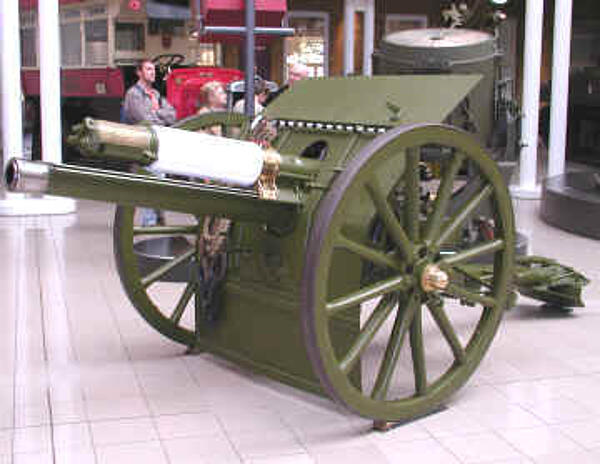British 18 pounder
The British 18 pounder field gun was first produced in 1904 and became one of Britain’s mainstay artillery guns during World War One. The gun formed the backbone of the Royal Field Artillery and was used across all the main theatres of war both during and after the war. In fact, the gun was so successful that it was used until 1942, having been significantly advanced in 1930 by the introduction of mechanisation.
The 18 pounder was a quick-firing horse-drawn fun, which was designed to be towed behind six horses. The gun was fitted with a hydraulic buffer with telescopic running-up springs, which meant recoil returned the gun to its original firing position and reduced reload time.

The gun retained the need for two-man laying throughout its lifetime but received a number of redesigns as technology advanced. It was also converted to arm Defensively Armed Merchant Ships (DAMS) so the boats could fight back against U-boat attack during the war.
Facts:
- The 18 pounder could fire shells of high explosives of between 4.6kg and 8.4kg
- Each gun weighed 1,279kg
- The 18 pounder had 84mm calibre and a greater shell weight than its German and French equivalent
- It had a range of 5,966 metres
- By August 1914, the British Army had 1,226 18 pounders
- By the end of the war, the army had 9,424 18 pounders
MLA Citation/Reference
"British 18 pounder". HistoryLearning.com. 2025. Web.
